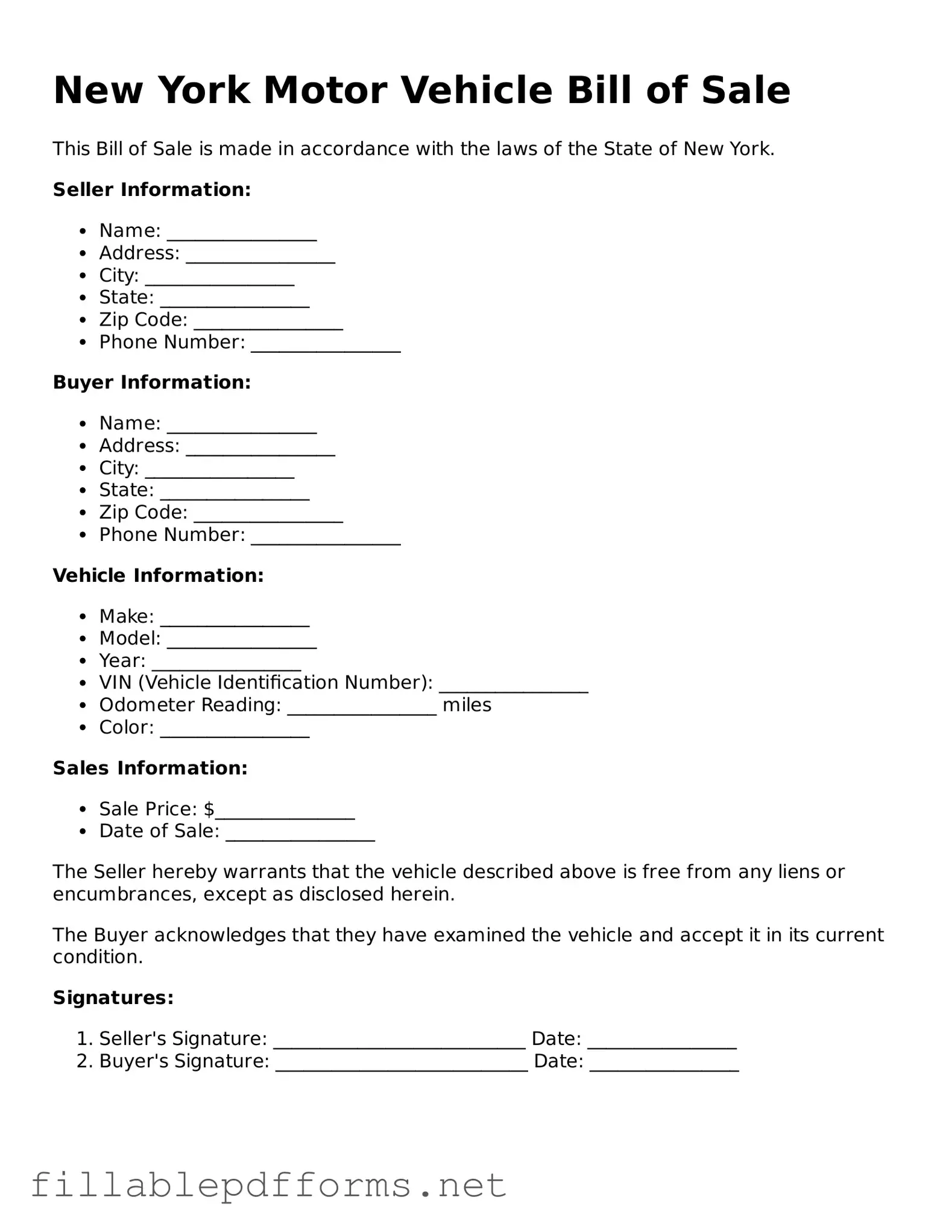Attorney-Verified Motor Vehicle Bill of Sale Form for New York State
The New York Motor Vehicle Bill of Sale form serves as a legal document that records the transfer of ownership of a vehicle from one party to another. This form is essential for both buyers and sellers, ensuring that the transaction is documented and recognized by the state. Understanding its components and importance can help facilitate a smooth vehicle transfer process.
Launch Editor Here
